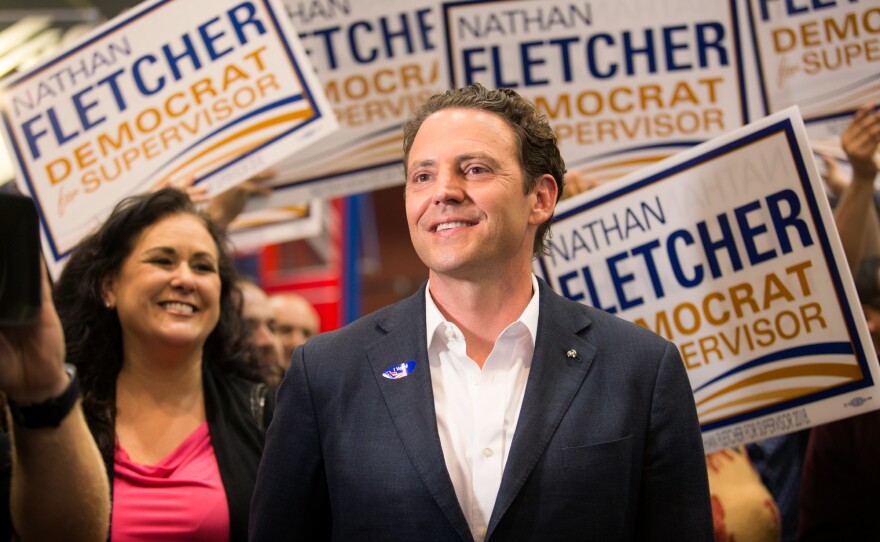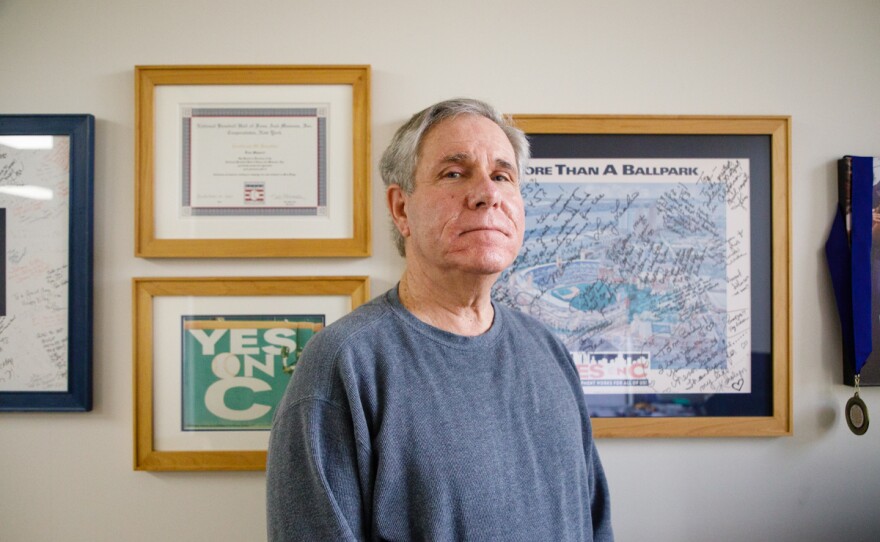The race to replace former county Supervisor Nathan Fletcher is an even bigger cash draw than the heated election that put him in office.
Back in 2018, Fletcher beat out four other candidates and flipped the San Diego County Board of Supervisors District 4 seat to Democratic control for the first time in decades. That primary election attracted about $1.2 million in independent expenditures — a sum that was considered “unprecedented” in San Diego politics at the time.
The 2023 election to fill Fletcher’s seat, prompted by his sudden resignation due to sexual assault allegations, amassed even more spending. Outside groups, which can’t coordinate with candidates' campaigns, spent more than $1.4 million communicating to voters about their preferred candidates for the primary election that took place on Aug. 15.
“I think it’s noteworthy that the level of spending has ratcheted up so much,” said Tom Shepard, the president and CEO of the political consulting firm Tom Shepard & Associates.
Shepard is a longtime political consultant in San Diego who ran successful campaigns for several past city mayors and county supervisors. Though the supervisors race is officially nonpartisan, Shepard said the recent transition from primarily Republican to Democratic voters in the region has greatly impacted election spending.
“I think it’s a reflection of the fact that a lot of labor groups see the potential for significant influence going forward and want to make sure their people are in there," Shepard said.

Almost half the independent spending in the race came from Real Working Families for Monica Montgomery Steppe, a coalition of labor unions that spent $670,000 to promote the Democratic candidate through mailers, text messages and digital ads.
Montgomery Steppe, the San Diego City Council president pro tem, was subject to more outside support and opposition spending than any other candidate.
“The councilmember is honored to have the support of the working families of San Diego County and the organizations that fight to make the county work for everyone,” said campaign spokesperson Eva Posner. “She is a champion of economic opportunity and treating our most vulnerable communities with dignity and respect, and we are proud to have earned so much support.”
Montgomery Steppe was the clear leader in the primary election, capturing about 42% of the vote.
She will face candidate Amy Reichert, a Republican who won 29% of the vote, in a November runoff.
In an interview, Reichert encouraged voters to be cautious about the major spending in the election.
“There are people that think they are the king makers in San Diego County, and they put in over a million dollars in special interest money into my opponents to prop them up,” Reichert said.
“If you see a commercial on TV, make sure that you look at the fine print that says ‘paid for by,’” she added. “And then you're gonna know who's trying to control the strings and the puppets here in San Diego County.”
Thad Kousser, a political science professor at the University of California San Diego, said candidates can receive significant boosts from outside groups, but money isn’t always the determining factor in the race.
“There’s a strong argument that Monica Montgomery Steppe was just by far the strongest candidate in this race, and that’s why she drew all this support from independent expenditure committees,” Kousser explained.
Kousser pointed to Montgomery Steppe as the “overwhelming favorite” in the upcoming general election because of the major voting advantage Democrats have in District 4, which includes central and southeastern San Diego neighborhoods and the cities of La Mesa and Lemon Grove.
He also anticipates big spenders will refocus in the coming months and turn their attention to another contest — Democrat Terra Lawson-Remer, vice chair on the Board of Supervisors, will face opposition from former San Diego Mayor Kevin Faulconer, a Republican, in November 2024.
“You see the most money in deeply blue or deeply red districts often in primaries,” Kousser said, “and then more money go into the purple districts in November.”
Montgomery Steppe’s Democratic opponent in the primary, Janessa Goldbeck, was boosted by more than $410,000 in independent expenditures, with most of it coming from a real estate-backed committee known as San Diegans for Fairness.
Law enforcement groups funded by the District Attorney’s Association and the San Diego Police union spent almost $180,000 in the race, pitting the Democrats against each other. Their mailers included misleading statements about Montgomery Steppe and promoted Goldbeck as their preferred candidate.
Though Goldbeck tried to distance herself from the attacks during her campaign, more ads kept coming.

Shepard described the mailers as “somewhere between ineffective and counterproductive.”
“That's one of the problems with independent expenditures,” he said. “The campaign can’t control the message. Sometimes it helps and sometimes it hurts.”
First, we downloaded spreadsheet data from each group’s spending reports through the County Registrar of Voters’ campaign finance search tool. We used several search criteria for the upcoming special election to ensure as much data as possible was captured, since the reports can be uploaded to different parts of the search system. Then, we used an R script to compile all the data into a single file. We manually added data from additional campaign finance reports from PDFs that could not be downloaded.
By going back to the original spending reports, inewsource was able to code each expenditure as support or opposition for a specific candidate. This information was not available in the data downloads but was visible on the top of each spending document.
Lastly, we analyzed the data to look for trends and calculate totals.
The data was collected on Jul. 28, 2023. Fundraising and spending is expected to increase in the weeks prior to the election.
inewsource reporter Crystal Niebla contributed to this story.







